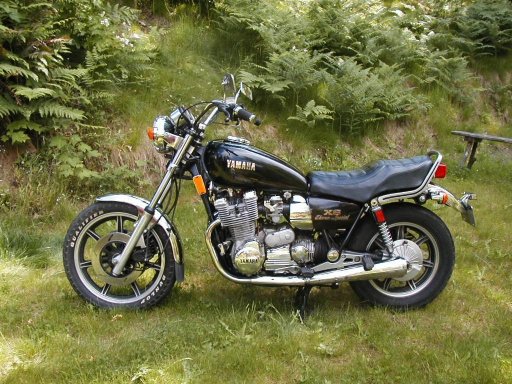Hi,
Last summer I bought a very pretty 80 xs11 in Chicago, cosmetically she lookes like new.
However, before I flew out, to drive it home to the British Columbia's West Coast, the previous owner adjusted the cam chain tension. He wanted to have her all prepped for my 2500 mile journey. Something went dreadfully wrong though:
I received a call 4 days before my booked flight , that the bike was kaputt, due to bend valve stems. Obviously the chain jumped a tooth etc.
However, making long story shorter, my flight was booked, I wanted the bike, so we got her fixed in a Chicago shop: mega $$$$$$.
On my way home I noticed a myriad of other flaws: I got to repair the charging system on the fly, at one point in Montana I had oil all over my pants because of hairline cracks in the valve cover. I had a cylinder cut out because of weird plug boots, etc etc.
As it turned out, despite the showroom cosmetic condition, the previous owners had futzed with so many aspects and did so many silly things, it would take too long to all describe it.
The main one however, was: to chrome engine covers, and put them back on WITHOUT the gaskets. Hence the crack in the valve cover, and multiple oil leaks, one warmed up.Which I did not notice on the road, until the oil warning light came on.....uuughh
Final upshot: the bike is now smoking, with less than 15000 miles on it.
I am trying to figure out, if it is the valve guides, or is it the rings?
It smokes fiercely blue upon cold start, but once warmed up it is not noticible anymore. #4 plug is black with oil. Uses a quart of oil now on 200miles.
My question:
Is there a way to test with a compression tester conclusively, which problem it is,valves or rings, or both?
If it is the valve guides only, I might get away without doing the rings, which is of course less daunting. I even heard talk of dropping in new valve guides without taking off the head.Is that possible?
Any thoughts on this?
Thanks, Jurgen
This is the 3rd XS11 , my previous ones never gave me any trouble at all, they were so dependable, it bordered at boring :-)
Last summer I bought a very pretty 80 xs11 in Chicago, cosmetically she lookes like new.
However, before I flew out, to drive it home to the British Columbia's West Coast, the previous owner adjusted the cam chain tension. He wanted to have her all prepped for my 2500 mile journey. Something went dreadfully wrong though:
I received a call 4 days before my booked flight , that the bike was kaputt, due to bend valve stems. Obviously the chain jumped a tooth etc.
However, making long story shorter, my flight was booked, I wanted the bike, so we got her fixed in a Chicago shop: mega $$$$$$.
On my way home I noticed a myriad of other flaws: I got to repair the charging system on the fly, at one point in Montana I had oil all over my pants because of hairline cracks in the valve cover. I had a cylinder cut out because of weird plug boots, etc etc.
As it turned out, despite the showroom cosmetic condition, the previous owners had futzed with so many aspects and did so many silly things, it would take too long to all describe it.
The main one however, was: to chrome engine covers, and put them back on WITHOUT the gaskets. Hence the crack in the valve cover, and multiple oil leaks, one warmed up.Which I did not notice on the road, until the oil warning light came on.....uuughh
Final upshot: the bike is now smoking, with less than 15000 miles on it.
I am trying to figure out, if it is the valve guides, or is it the rings?
It smokes fiercely blue upon cold start, but once warmed up it is not noticible anymore. #4 plug is black with oil. Uses a quart of oil now on 200miles.
My question:
Is there a way to test with a compression tester conclusively, which problem it is,valves or rings, or both?
If it is the valve guides only, I might get away without doing the rings, which is of course less daunting. I even heard talk of dropping in new valve guides without taking off the head.Is that possible?
Any thoughts on this?
Thanks, Jurgen
This is the 3rd XS11 , my previous ones never gave me any trouble at all, they were so dependable, it bordered at boring :-)

Comment